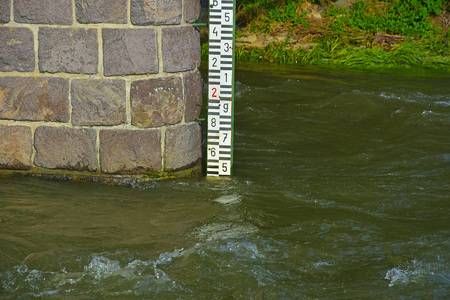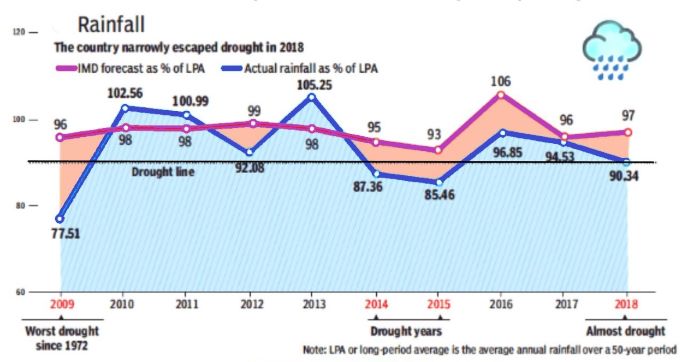

Goundwater levels in India have dipped by 52% of the wells being monitored, and declining rapidly.
The water levels of 91 reservoirs in India fell 1% to reach 25% of their storage capacity. The water storage available in 91 major reservoirs of the country for the week ending on May 02, 2019 stood at 40.592 billion cubic meters (BCM). The news comes even as reports indicate key rivers like the Cauvery, Ganga and Godavari are well below comparative levels so far.
According to the official data, the highlights of the region-wise storage data:
Though the Indian Meteorological Department (IMD) in April has pegged overall countrywide rainfall at 96% of the Long Period Average (LPA) with model error of plus/minus 5%, worries are high that uneven distribution could play a huge culprit again. Over 42% of the land area of the country, affecting some 500 million people are suffering from drought like conditions, according to Drought Early Warning System (DEWS) , a real time drought monitoring platform.


There is only 39% probability of ‘near normal’ monsoon in the first stage forecast, prediction of a “well-distributed rainfall scenario” by the country’s national weather forecaster will bring a cheer to agriculturalists as skewed distribution — a pattern sometimes linked to climate change — leaves one or the other region of the country in a deficient rainfall (drought) situation. IMD’s forecast differs from private forecaster Skymet’s prediction of a below normal monsoon. India in 2018 had narrowly escaped drought as seen in the figure.
The latest monsoon is already delayed by a week, according to PV Joseph, eminent scientist, and researcher and former director of the India Met Department (IMD). He added that the onset of the South-West Monsoon is likely to be delayed by a week this year based on the timeline of onset on the ‘pre-monsoon rain peak’ (PMRP) phenomenon. However, KJ Ramesh, Director General of Indian Meteorological Department (IMD) has been prompt to add that, “the cyclonic storm (FANI) is a transient system and doesn’t impact monsoon.”
Ramesh has also allayed concerns over the El Nino phenomenon. “The apprehension that El Nino will grow stronger and stronger from its condition in January and February need not be taken seriously. From February, El Nino has been soft. As per projections, it will go from weak stage to neutral conditions. It won’t impact the overall monsoon during 2019,” he pointed out.
This is especially good news for southern India where cities like Mangalore have already started their multiple rounds of water rationing. There are predictions of rainfall in Tamil Nadu, Kerala, Adhra Pradesh and Odisha, which means that Southern and Eastern belt will have some respite from water scarcity. All the hope, however, hinges on the fact that people and administration will use this event as a lesson for future planning of water conservation and water scarcity mitigation rather than depending solely on monsoons to quench their thirsts.
So far, states including Andhra Pradesh, Bihar, Gujarat, Jharkhand, Karnataka, Maharashtra, parts of the North-East, Rajasthan, Tamil Nadu and Telangana are the worst hit. These states are home to 500 million people, almost 40% of the country’s population.While the central government has not declared drought anywhere so far, the state governments of Andhra Pradesh, Gujarat, Karnataka, Maharashtra, Odisha and Rajasthan have declared many of their districts as drought-hit.
With the monsoon d-day for Kerela as May 29, , it will be some time before the monsoons reach some of these states. By the time the rains do come by June end in some of these areas, the situation could be quite dire, in fact.
In a significant move toward advancing green energy and industrial growth in the state, Himachal…
Golabl chemical conglomerate BASF has announced that its now offering the world’s first biomass-balanced polyethersulfone…
In a crucial stint to bolster the biogas sector and sustainable dairying in the country,…
TotalEnergies SE has received approval to proceed with its Middlebrook solar and battery project in…
Andhra Pradesh Chief Minister Chandrababu Naidu has inaugurated the Rs 1,000-crore green hydrogen plant of…
The BITS Pilani has developed an innovative solution for managing landfill leachate, domestic septage, and…